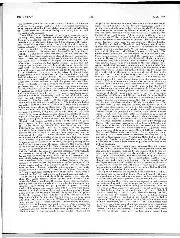The drivers gave Jaguar further cause to smile. Of the six nominated to drive the Cs, two were previous Le Mans winners and one an emerging young star called Stirling Moss. The only car not to boast someone who had already stood upon the top step of this most famous race was the Number 18 car of Duncan Hamilton and Tony Rolt. It is they whom this story concerns.
It was the sheer speed of this car in Friday’s practice (in which Hamilton unofficially broke the lap record) which set the extraordinary train of events in motion. Moss, whose ‘C’ was proving less speedy, wanted to try a lower back axle ratio and the spare car was prepared and sent out to do a few warm-up laps in the hands of Jaguar’s chief tester, Norman Dewis. The problem was, the spare C-type also carried the number 18 and could therefore be construed to be a practice car which, under new regulations, was not allowed. Ferrari cried foul, their protest was upheld and Rolt and Hamilton were duly thrown out of the race. An appeal was granted, but not until the morning of the race and, knowing the historical intransigence of the French authorities, few believed it stood the slightest chance.
The two drivers were inconsolable. They had shared a ‘C’ the year before and watched while their team-mates and then, eventually, themselves retired. They decided to abandon their team and families and commiserate alone. All of their energies which had been marshalled to win Le Mans were now channelled in a rather different direction. They didn’t just have a few beers or even just get conventionally drunk. They drank, literally, all night.

It was between C-Type vs Ferrari 375MM for the win
Alamy
They were found at 10:00am the following morning, in a restaurant called Gruber’s, now drinking coffee and nursing apocalyptic hangovers. Hamilton, in his brilliantly engaging autobiography Touch Wood described the scene thus:
“We were sitting there feeling ill, miserable and dejected when a MkVII Jaguar drew up outside and William Lyons got out. He had paid a FF25,000 fine and we were back in the race. In six hours time the flag would fall. Neither of us had had any sleep and 24-hours of racing lay ahead. We ordered more black coffee and enquired if there was a Turkish bath in the town. There was not.”




